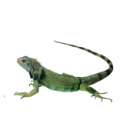Kennel Club Charitable Trust Companion Animal Epidemiologist - Disorders of UK Companion Animals (In Progress)
People: Dan O'Neill
Dates: 2017 - present
Kennel Club Charitable Trust (KCCT) Companion Animal Epidemiologist: In October 2014, Dr Dan O'Neill took up the special role of KCCT companion animal epidemiologist; a position held between the RVC and the Kennel Club (KC). This joint venture benefits from the extensive epidemiological expertise of the RVC's Veterinary Epidemiology, Economics and Public Health group, while also tapping into the close links between the KC, breed groups and other important stakeholders.
Aims: This collaboration aims to advance the companion animal research capacity of VetCompass and to support joint canine breed-specific research between the RVC and the KC. This project will build on current data collection methods within both institutes, with Dan interrogating both KC canine health data and the VetCompass database to generate valuable and important findings relevant to companion animal health.
Objectives:
- To investigate the breed-specific disorder prevalence and demography
- To determine the prevalence of, and risk factors for a range of important canine disorders
- To study the demography and disorders of other companion animal species
Specific to Objective 1
Disorder prevalence will be investigated in:
 English Springer Spaniels and Golden retrievers
English Springer Spaniels and Golden retrievers - Greyhounds and Lurchers
- Pugs
- Border Terriers
- Cocker spaniels,Poodles and Cockapoos
- Labrador Retrievers, Poodles and Labradoodles
- Miniature Schauzers
- Rottweilers
- German Shepherd Dogs
Specific to objective 2:
Studies will be conducted to determine the prevalence of, and risk factors for:
 Gastric dilation and volvulus
Gastric dilation and volvulus- Dystocia
- Corneal ulceration
- Thoracolumbar disorders
- Urinary incontinence
- Elbow joint disease
- Lipoma
- Demodicosis
- Keratoconjunctivitis
- Dilated cardiomyopathy
- Undesirable behaviours
 Specific to objective 3:
Specific to objective 3:
Studies will investigate the common disorders reported in:
-
CatsGuinea pigs
- Rabbits
- Reptiles
The project will progress the current collaboration between the KCCT and the RVC to expand the evidence base for breed related conditions and identify breed health related priorities. The existing collaboration has assisted VetCompass™ to build its highly successful platform for collecting, understanding and interrogating primary-care veterinary clinical data. VetCompass™ currently includes over 10 million animals from a network of 1000 practices across the UK (~ 20% of all UK practices) and has over 35 peer-reviewed publications to date. The position will focus on individual breeds classified as high priority breeds by the Kennel Club (KC) to deliver data on the prevalence of common disorders, general demography and longevity. These results will help to fill existing data gaps and assist the work of the KC’s ‘Breed Health and Conservation Plans’ project in order to improve breed-specific health in dogs.
Academic collaborators: Dr. D. Brodbelt (dbrodbelt@rvc.ac.uk), Prof. D. Church (dchurch@rvc.ac.uk)
Current VetCompass evidence on canine purebred health
June 2nd, 2015
The VetCompass Programme is a collaborative between the Royal Veterinary College, the University of Sydney and a growing number of general veterinary practices in the UK and more recently Australia. VetCompass uses clinical information shared from veterinary practices to examine health issues in companion animals. Current hot topics in canine health include whether crossbred dogs are healthier than purebred dogs and which breeds are the healthiest. VetCompass studies show that these questions do not have simple answers.
Regarding crossbred and purebred dogs, VetCompass studies show, on the one hand, that crossbreds live 1.2 years longer than purebreds (O'Neill et al 2013) but, on the other hand, crossbred dogs have lower occurrences for only three from the top 20 disorders recorded in dogs (O'Neill et al 2014). Crossbred dogs do appear to benefit from a hybrid vigour effect for general characteristics such as longevity but seem to enjoy less advantage when it comes to the occurrence of specific common disorders.
On the question of the healthiest breeds, the lifespan of breeds varies widely, from 5.5 years in the Dogue de Bordeaux up to 14.2 years in the Miniature Poodle (O'Neill et al 2013). However, across many common and important disorders, breeds at high risk for one disorder are often at lower risk for another disorder (Kearsley-Fleet et al 2013, Mattin et al 2014, O'Neill et al 2014, O'Neill et al 2013, Mattin et al 2015, Summers et al 2015). So, although we now know which breeds live the longest and which breeds are most at risk for specific disorders, we do not yet have an answer for which breeds are the healthiest overall. VetCompass work will continue to help answer these vexing questions.
Demography and health of Pugs under primary veterinary care in England
O'Neill DG, Darwent EC, Church DB and Brodbelt DC (June 2016) Canine Genetics and Epidemiology 2016, 3(1):1-12.
Using VetCompass clinical data, this study aimed to characterise the demography and common disorders of the general Pug population attending primary-care veterinary practice in England. During the study period, 1.03% of dogs attending primary care practice in England were a Pug. The most common health problems recorded were being overweight or obese, corneal disorders and otitis externa. The most prevalent pathophysiological processes were inflammation and congenital/developmental. Identification health priorities based on VetCompass data can support evidence-based reforms to improve health and welfare within the breed.
Epidemiology of hyperadrenocorticism among 210,824 dogs attending primary-care veterinary practices in the UK from 2009 to 2014
O'Neill DG, Scudder C, Faire JM, Church DB, McGreevy PD, Thomson PC and Brodbelt DC (June 2016) Journal of Small Animal Practice 2016
Electronic patient record data from 210,824 dogs attending 119 veterinary practices were examined to estimated the prevalence of, and to determine risk factors for canine hyperadrenocorticism in the UK. This study reports the estimated prevalence of canine hyperadrenocorticism diagnosis in the UK as 0.28%, suggesting that it is the third most prevalent endocrinopathy of dogs. Breeds identified at increased risk of hyperadrenocorticism included the bichon frise, standard dachshund and Yorkshire terrier. Individuals with a bodyweight equal or greater than their breed mean, dogs aged 12 years or more and insured animals were also at increased odds of canine hyperadrenocorticism. The important breed, age and bodyweight associations described may improve diagnosis and enhance understanding of the underlying pathophysiology.
Epidemiological associations between brachycephaly and upper respiratory tract disorders in dogs attending veterinary practices in England.
O'Neill D, Jackson C, Guy J, Church D, McGreevy P, Thomson P. & Brodbelt D. (July 2015) Canine Genetics and Epidemiology
From a sampling frame of 170,812 dogs attending 96 primary-care veterinary clinics participating within the VetCompass Programme, 200 were randomly selected from each of three extreme brachycephalic breed types (Bulldog, French Bulldog and Pug) and three common small-to medium sized breed types (Yorkshire Terrier, Border Terrier and West Highland White Terrier). Review of clinical records revealed that upper respiratory tract (URT) disorders are commonly diagnosed in dogs of all these breeds attending primary-care veterinary practices in England. The three extreme brachycephalic breed types were relatively short-lived and predisposed to URT disorders compared with the three other small-to-medium size breeds investigated. These results clarify how common URT disorders are overall and especially in extreme brachycephalic breeds, suggest that owners and veterinarians should be more vigilant for URT disorders and support advice for breeders to select against extreme body conformations in predisposed breeds.
The epidemiology of patellar luxation in dogs attending primary-care veterinary practices in England.
O'Neill DG, Meeson RL, Sheridan A, Church DB and Brodbelt DC (June 2016) Canine Genetics and Epidemiology
Electronic patient record data from 210,824 dogs attending 119 veterinary practices were used to estimate the prevalence of, and to determine risk factors for patellar luxation in dogs attending primary-care veterinary practices in England. The results of this study highlight that overall 1.3% of dogs in England are affected by patellar luxation and that there are strong breed predispositions towards certain small breeds of dog, particularly the Pomeranian and Yorkshire Terrier. Being neutered, female and weighing less than the breed were additional risk factors for patellar luxation. Patellar luxation should be included as a welfare priority for dogs and that control strategies for this disorder should be considered, especially in predisposed breeds.
Epidemiology of Cranial Cruciate Ligament Disease Diagnosis in Dogs Attending Primary-Care Veterinary Practices in England
Taylor-Brown FE, Meeson RL, Brodbelt DC, Church DB, McGreevy PD, Thomson PC & O'Neill DG. (June 2015; Epub ahead of print) Veterinary Surgery
This retrospective cohort study with nested case-control reviewed the health records of 953 dogs diagnosed with cranial cruciate ligament (CCL) disease from a population of 171,522 dogs attending 97 primary-care practices in England to estimate prevalence of CCL disease diagnosis in UK dogs, evaluate risk factors for diagnosis and describe the management of cases attending UK primary-care veterinary practices. The breed predispositions and demographic risk factors identified in this study can be used to help direct future research on canine CCL disease and inform decisions on the clinical management of dogs diagnosed with the condition.
Epidemiology of diabetes mellitus among 193,435 cats attending primary care veterinary practices in England
O'Neill DG, Gostelow R, Orme C, Church D., Niessen SJM, Verheyen K & Brodbelt DC (July 2016) Journal of Veterinary Internal Medicine
Diabetes mellitus (DM) is a common endocrine disease of cats, however it's epidemiology is poorly defined. This study aimed to estimate the prevalence of, and identify risk factors for DM in a large population of cats attending primary-care practice in England. During the study period 0.58% of cats were diagnosed with diabetes mellitus. Multivariable logistic regression modelling identified that Tonkinese, Norwegian Forest and Burmese cats had increased odds of DM compared with crossbred cats. DM odds increased as bodyweight categories increased above 4 kg, as cats aged beyond 6 years old and in insured cats; sex was not significantly associated with DM. Diabetes mellitus is an important component of the primary-care practice caseload with 1-in-200 cats affected. An increased risk of DM in certain cat breeds supports a genetic predisposition. These results can uide future research and preventative healthcare.
Vet Compass Project Type: Dog, Cat, Small Mammal, Exotic


